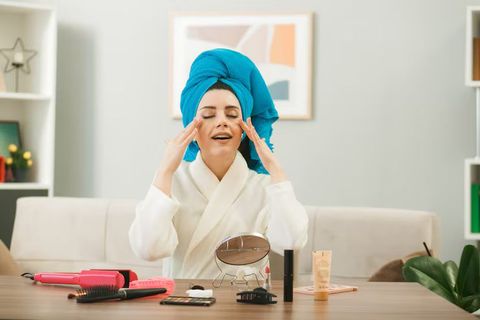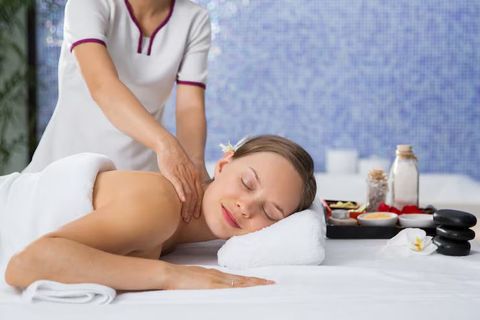Oxygen Facial Treatment Explained: Information, Suggestions, and Practical Knowledge
An oxygen facial treatment is a non-invasive skincare technique designed to support skin hydration and provide a refreshed appearance through oxygen-based methods. It emerged as part of a broader movement toward advanced skincare technologies focusing on gentle approaches and scientific principles. As skincare routines became more focused on skin barrier support, hydration science, and dermatology-led practices, oxygen-based methods gained attention for their simplicity and mild application.
The treatment aligns with the global shift toward non-abrasive skincare options that avoid harsh chemicals or aggressive mechanical steps. Its popularity increased as people began looking for approaches supported by skincare research, skin microbiome insights, and digital skin analysis trends. Today, oxygen facials are widely discussed in beauty education, skincare forums, and dermatology-oriented publications because they highlight the link between skin oxygenation, hydration levels, and appearance-based wellness.
Oxygen facial methods vary across regions, but the concept remains similar: a stream of oxygen or oxygen-infused formulations is directed at the skin’s surface. This idea is rooted in the understanding that hydration and surface oxygen exposure can influence how skin appears temporarily after a session. It is not a medical treatment, and it does not claim to cure or reverse skin disorders; instead, it is used as a cosmetic technique focused on appearance enhancement and surface comfort.
Importance
Oxygen facial treatment matters today because the global interest in skin health research, hydration monitoring, and non-invasive cosmetic science has significantly grown. People increasingly seek appearance-focused methods that feel gentle, require minimal downtime, and align with broader wellness routines. The approach is relevant for individuals exploring hydration-based skincare, dermatology insights, or cosmetic technology trends.
This treatment appeals to a wide audience, including:
-
People curious about skincare supported by simple, surface-level techniques
-
Individuals preferring non-abrasive options
-
Those who experience dryness due to weather or environmental exposure
-
Beginners exploring appearance-focused skincare methods
-
People following global beauty trends emphasizing clean formulations and supportive skincare routines
Oxygen facial treatment is not a replacement for dermatological care, nor does it claim medical benefits. Instead, its importance lies in the educational aspect of understanding how skin hydration, oxygen contact, and cosmetic application methods interact with appearance.
In addition, its rising relevance connects to high-interest topics such as:
-
Skin hydration analytics
-
Non-invasive skincare technology
-
Dermatology-informed cosmetic procedures
-
Skin wellness research
-
Beauty treatment insights
Because these keywords align with high-value educational topics, the oxygen facial treatment is often discussed in content related to skincare science and beauty knowledge resources.
Recent Updates
Over the past year, cosmetic technology and skincare research have evolved, contributing new insights into oxygen-based cosmetic methods. Here are some noteworthy developments from late 2024 to 2025:
-
2024–2025 digital skincare analysis growth:
Skin analysis apps and AI-driven tools became more sophisticated in 2024–2025, making it easier for consumers to understand hydration levels and skin texture patterns. This indirectly influenced interest in oxygen facial treatments as people explored hydration-focused cosmetic options. -
2024 updates in cosmetic device guidelines:
Several countries reviewed guidelines for cosmetic equipment used in salons and skincare centers. These updates emphasized safety, hygiene standards, and operator training, indirectly shaping how oxygen-based cosmetic tools are used. -
2025 beauty trend shift toward gentler treatments:
Global beauty reports from early 2025 highlighted increasing preference for non-abrasive methods that prioritize comfort and mild hydration enhancement. Oxygen facials fit into this trend, which centers around skin barrier support, hydration awareness, and cosmetic minimalism. -
2024–2025 consumer information focus:
Transparency in cosmetic procedure explanations became more important. Platforms and publications improved educational content, ensuring that cosmetic treatments like oxygen facials are presented factually and without unverified claims.
These updates, while not directly altering the method, shape how the public understands and evaluates oxygen facial treatments in modern skincare culture.
Laws or Policies
Oxygen facial treatments fall under cosmetic procedures, not medical treatments. Therefore, regulations typically relate to cosmetic service standards rather than healthcare legislation. Depending on the country, the regulatory areas that influence this treatment include:
-
Cosmetic equipment regulations:
Many regions require cosmetic devices to meet manufacturing and safety standards. These rules ensure equipment used for oxygen application is safe and compliant with cosmetic-grade usage. -
Hygiene and sanitation guidelines:
Cosmetic settings must follow hygiene policies to maintain safe environments. These rules ensure that tools, nozzles, and oxygen applicators are cleaned or replaced as required. -
Professional training requirements:
Some countries implement training certifications for practitioners performing cosmetic procedures, including oxygen-based treatments. The focus is on safe handling rather than therapeutic claims. -
Advertising guidelines:
Nations often have strict regulations against making medical or therapeutic claims for cosmetic procedures. This ensures treatments like oxygen facials are promoted with accurate, education-based information. -
Consumer protection policies:
These policies require clear, truthful explanations of cosmetic procedures so consumers can make informed choices without misleading statements.
Regulations vary by region, but the overarching theme is safety, transparency, and accuracy in cosmetic settings.
Tools and Resources
Several tools and resources can help individuals learn more about oxygen facial treatments and broader skincare topics:
Digital Skin Analysis Tools
-
AI-based hydration assessment apps
-
Skin texture mapping tools
-
Mobile platforms offering dermatologist-reviewed educational content
Cosmetic Procedure Education Platforms
-
Skincare research websites
-
Dermatology association educational pages
-
Beauty science publications that discuss non-invasive cosmetic technology
Hydration Tracking Tools
-
Skin moisture monitoring devices
-
Smart mirrors with analysis features
-
Environmental exposure and humidity tracking apps
Learning Resources
-
Cosmetic science textbooks and e-learning modules
-
Government or regulatory websites explaining cosmetic equipment standards
-
Public health pages outlining safety guidelines for cosmetic procedures
These tools help individuals better understand how hydration, oxygen exposure, and cosmetic application techniques influence the appearance of the skin.
FAQs
What does an oxygen facial treatment involve?
It typically involves directing a flow of oxygen or oxygen-infused formulations onto the skin’s surface using cosmetic-grade equipment. The focus is on appearance-based hydration and surface refreshment.
Is an oxygen facial treatment suitable for all skin types?
It is generally used as a mild cosmetic method appropriate for many skin types. However, people with specific skin concerns or sensitivities may benefit from consulting a dermatologist for personalized guidance.
Is there scientific evidence supporting oxygen facial benefits?
Research supports the value of hydration for improving skin appearance, and oxygen facials are considered part of appearance-focused cosmetic routines. They do not claim medical benefits or treat skin conditions.
How long does the effect last?
The results are temporary and typically associated with surface hydration and cosmetic application techniques. Duration varies based on individual skin type and routine.
Are oxygen facials regulated?
They fall under cosmetic procedure regulations. The focus is on equipment safety, hygiene standards, and accurate educational information.
Conclusion
Oxygen facial treatment represents a cosmetic approach centered on hydration and surface-level skin freshness. Its relevance continues to grow as people prioritize gentle skincare techniques, evidence-based beauty education, and non-invasive cosmetic trends. While the treatment does not replace dermatological care or claim medical effects, it plays a meaningful role in the broader landscape of skin health awareness, hydration science, and cosmetic wellness knowledge.
With evolving technology, updated safety guidelines, and increasing access to digital skin analysis tools, individuals can make well-informed decisions about the cosmetic methods they choose to explore. Understanding the context, importance, regulations, and resources surrounding oxygen facial treatment empowers readers to evaluate the technique with clarity and confidence.
Disclaimer: The information provided in this article is for informational purposes only. We do not make any claims or guarantees regarding the accuracy, reliability, or completeness of the information presented. The content is not intended as professional advice and should not be relied upon as such. Readers are encouraged to conduct their own research and consult with appropriate professionals before making any decisions based on the information provided in this article.





